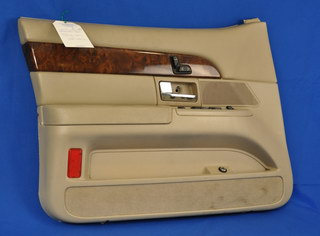Spoliation of evidence can be the silent killer in litigation. The strongest cases can lose their validity by critical evidence or opinions based on evidence being thrown out of court due to improper handling of evidence. It starts with the initial capture and labeling of evidence and inspected exemplars (exemplars become evidence when they are inspected/tested by an expert and bring critical information to a case) and continues through the entire chain of custody.
Forensic engineers follow the evidence. They use their curiosity to uncover possible contributory causes and science to connect the evidence to the path of origin and cause. When gathering evidence at a fire loss, for example, it is critical that the engineering expert ensure that all possible contributors are gathered and stored as evidence. Having this ‘Trained Eye’ on what should be collected as evidence comes with experience and if done incorrectly, can cause spoliation of evidence. Some contributory causes are proximate, some are direct, and some are red herrings. It is the forensic engineer’s job to then qualify and quantify these branching contributory causes and provide conclusions/opinions as to the cause(s) of accident/failure and associated liability. As the science is often complicated in these matters, it is the engineer's skill in communicating science and possible demonstrative evidence such as a failure path diagram that help to win claims and litigation. Creation of such a diagram as demonstrative evidence may help the judge and jury see the path clearly and distinctly. It also shows all the factors that were considered in coming to an opinion.
ASTM publishes standards including: Practice for Collection and Preservation of Information and Physical Items by a Technical Investigator (E1188-05), Receiving, Documenting, Storing, and Retrieving Evidence in a Forensic Science Laboratory (E1492-05), and Examining and Preparing Items that are or may Become Involved in Criminal or Civil Litigation (E860-07). When evidence is first gathered/received, it must be labeled, tagged, logged, and stored in a secure place. The way evidence is stored can be overlooked as well. Items that may degrade over time need to be stored in a manner that preserves their ‘as collected’ condition as much as possible. This initiates the chain of custody which includes paperwork and signatures required when transferring evidence. Further, when evidence is stored, procedures for routine documentation/inventory of the contents of the evidence storage area must be established. When evidence is tested, ASTM standards should be followed as applicable and all attendees must be listed to ensure no spoliation. If evidence is to be returned, the chain of custody is further documented with a letter stating transfer with appropriate signatures. Finally, if evidence is to be destroyed, documentation stating such requirement is necessary from the client.
Oftentimes, engineering experts are involved with evidence handling and storage. Whether they be a first responder to an accident scene or later in the legal process when experts must be designated and inspection is required, they must be intimately familiar with evidence handling standards and procedures. The engineering expert interacts with evidence by logging it and ensuring safe handling and storage; chain of custody usually starts with the engineer as the evidence collecting entity. The engineer may again be involved when evidence must be tested or destroyed and documented as such to be in compliance with standards. To find out more how evidence/exemplar handling and storage may be a critical part of your claim or litigation, contact CED at 800.780.4221.






